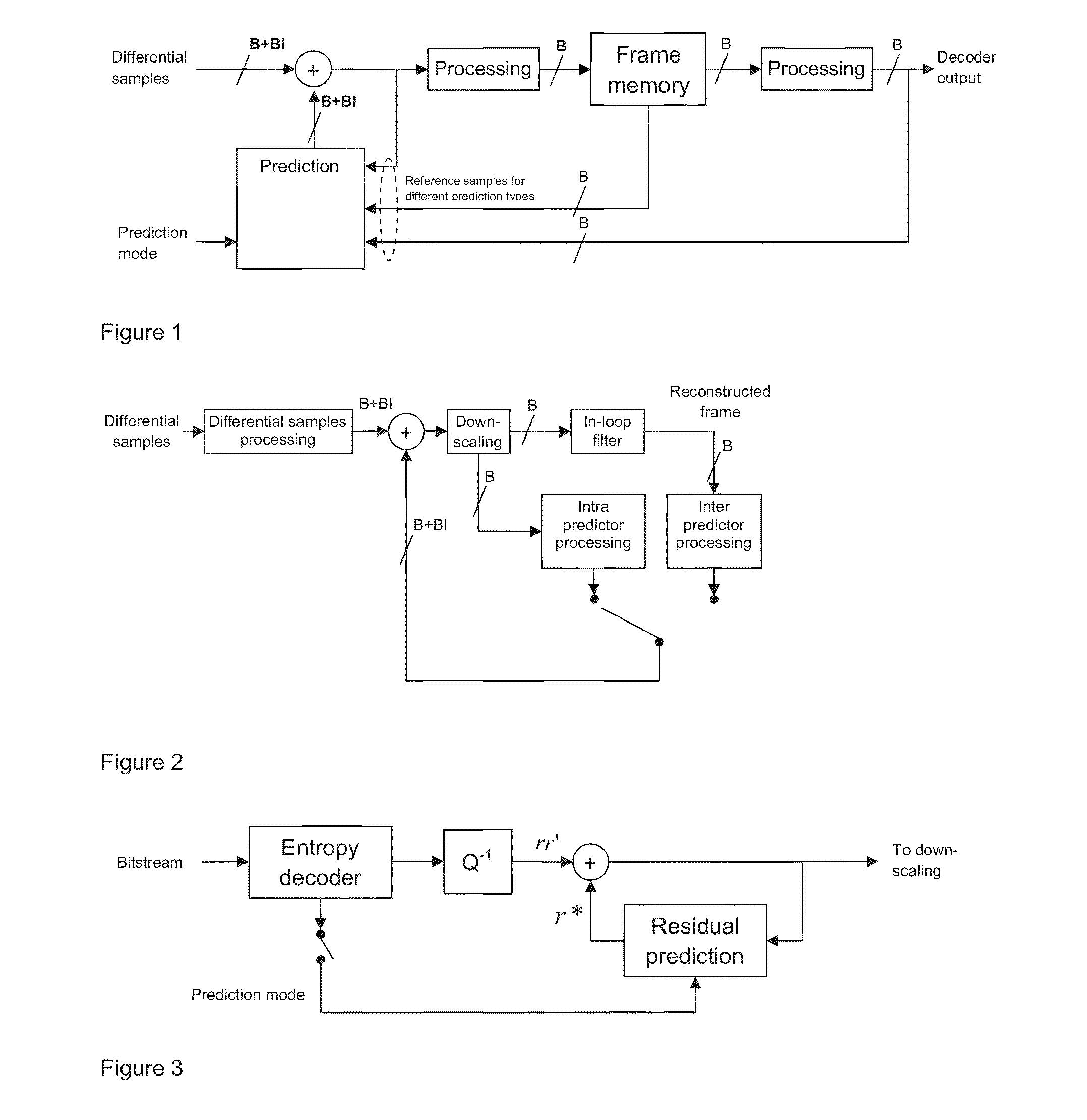Video encoding and decoding with prediction at higher precision
a video encoding and prediction technology, applied in the field of video compression and decompression systems, can solve the problems of loss information that cannot be recovered at the decoder, introduce some quality degradation, increase the precision of storing resources, etc., and achieve the effect of improving the coding efficiency of video coding, high accuracy, and better prediction accuracy
- Summary
- Abstract
- Description
- Claims
- Application Information
AI Technical Summary
Benefits of technology
Problems solved by technology
Method used
Image
Examples
Embodiment Construction
[0037]The present invention is now described in detail starting with the general framework which performs reconstruction from differential samples using a predictor in higher accuracy (see FIG. 1). Then the invention is detailed in several specific instances derived from this general framework. There is disclosed herein a method for reconstructing video pixels from differential samples using a predictor with higher precision (accuracy) values.
[0038]Accordingly, the residual samples are reconstructed by adding a predictor with precision equal to B+BI. The obtained samples are stored in the frame memory at precision equal to B and made available for reconstruction of future video pixels. The processing operated over the frames stored in memory will be still carried out with precision equal to B and the up-scaling to increased precision B+BI will be performed in the prediction module as illustrated in FIG. 1. It should be noted that typical addition and subtraction operations increase ...
PUM
 Login to View More
Login to View More Abstract
Description
Claims
Application Information
 Login to View More
Login to View More - R&D
- Intellectual Property
- Life Sciences
- Materials
- Tech Scout
- Unparalleled Data Quality
- Higher Quality Content
- 60% Fewer Hallucinations
Browse by: Latest US Patents, China's latest patents, Technical Efficacy Thesaurus, Application Domain, Technology Topic, Popular Technical Reports.
© 2025 PatSnap. All rights reserved.Legal|Privacy policy|Modern Slavery Act Transparency Statement|Sitemap|About US| Contact US: help@patsnap.com



